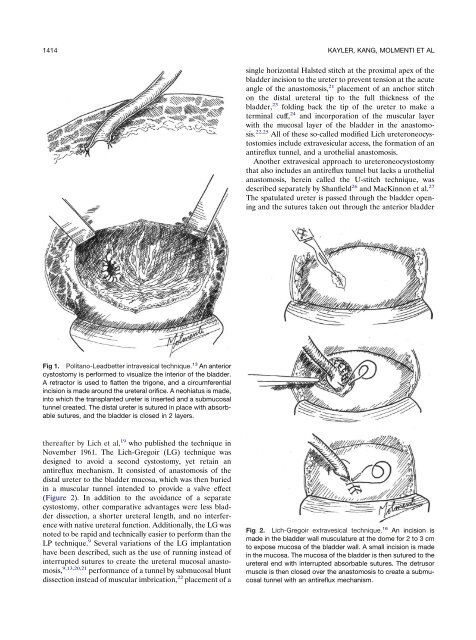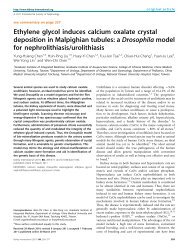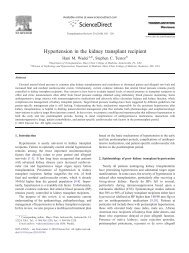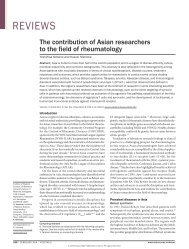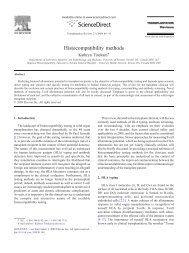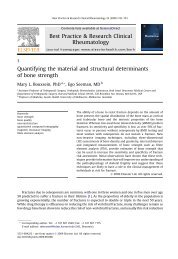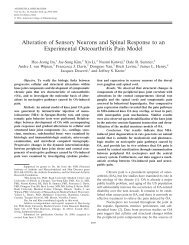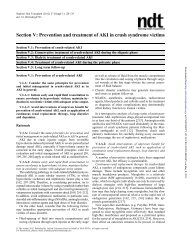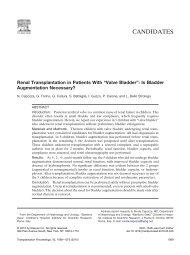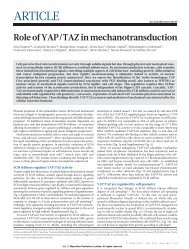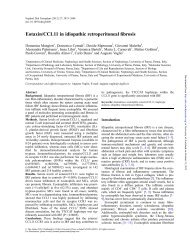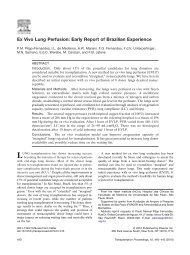Kidney Transplant Ureteroneocystostomy Techniques and ...
Kidney Transplant Ureteroneocystostomy Techniques and ...
Kidney Transplant Ureteroneocystostomy Techniques and ...
You also want an ePaper? Increase the reach of your titles
YUMPU automatically turns print PDFs into web optimized ePapers that Google loves.
1414 KAYLER, KANG, MOLMENTI ET AL<br />
Fig 1. Politano-Leadbetter intravesical technique. 13 An anterior<br />
cystostomy is performed to visualize the interior of the bladder.<br />
A retractor is used to flatten the trigone, <strong>and</strong> a circumferential<br />
incision is made around the ureteral orifice. A neohiatus is made,<br />
into which the transplanted ureter is inserted <strong>and</strong> a submucosal<br />
tunnel created. The distal ureter is sutured in place with absorbable<br />
sutures, <strong>and</strong> the bladder is closed in 2 layers.<br />
thereafter by Lich et al, 19 who published the technique in<br />
November 1961. The Lich-Gregoir (LG) technique was<br />
designed to avoid a second cystostomy, yet retain an<br />
antireflux mechanism. It consisted of anastomosis of the<br />
distal ureter to the bladder mucosa, which was then buried<br />
in a muscular tunnel intended to provide a valve effect<br />
(Figure 2). In addition to the avoidance of a separate<br />
cystostomy, other comparative advantages were less bladder<br />
dissection, a shorter ureteral length, <strong>and</strong> no interference<br />
with native ureteral function. Additionally, the LG was<br />
noted to be rapid <strong>and</strong> technically easier to perform than the<br />
LP technique. 9 Several variations of the LG implantation<br />
have been described, such as the use of running instead of<br />
interrupted sutures to create the ureteral mucosal anastomosis,<br />
9,13,20,21 performance of a tunnel by submucosal blunt<br />
dissection instead of muscular imbrication, 22 placement of a<br />
single horizontal Halsted stitch at the proximal apex of the<br />
bladder incision to the ureter to prevent tension at the acute<br />
angle of the anastomosis, 21 placement of an anchor stitch<br />
on the distal ureteral tip to the full thickness of the<br />
bladder, 23 folding back the tip of the ureter to make a<br />
terminal cuff, 24 <strong>and</strong> incorporation of the muscular layer<br />
with the mucosal layer of the bladder in the anastomosis.<br />
22,25 All of these so-called modified Lich ureteroneocystostomies<br />
include extravesicular access, the formation of an<br />
antireflux tunnel, <strong>and</strong> a urothelial anastomosis.<br />
Another extravesical approach to ureteroneocystostomy<br />
that also includes an antireflux tunnel but lacks a urothelial<br />
anastomosis, herein called the U-stitch technique, was<br />
described separately by Shanfield 26 <strong>and</strong> MacKinnon et al. 27<br />
The spatulated ureter is passed through the bladder opening<br />
<strong>and</strong> the sutures taken out through the anterior bladder<br />
Fig 2. Lich-Gregoir extravesical technique. 16 An incision is<br />
made in the bladder wall musculature at the dome for 2 to 3 cm<br />
to expose mucosa of the bladder wall. A small incision is made<br />
in the mucosa. The mucosa of the bladder is then sutured to the<br />
ureteral end with interrupted absorbable sutures. The detrusor<br />
muscle is then closed over the anastomosis to create a submucosal<br />
tunnel with an antireflux mechanism.


